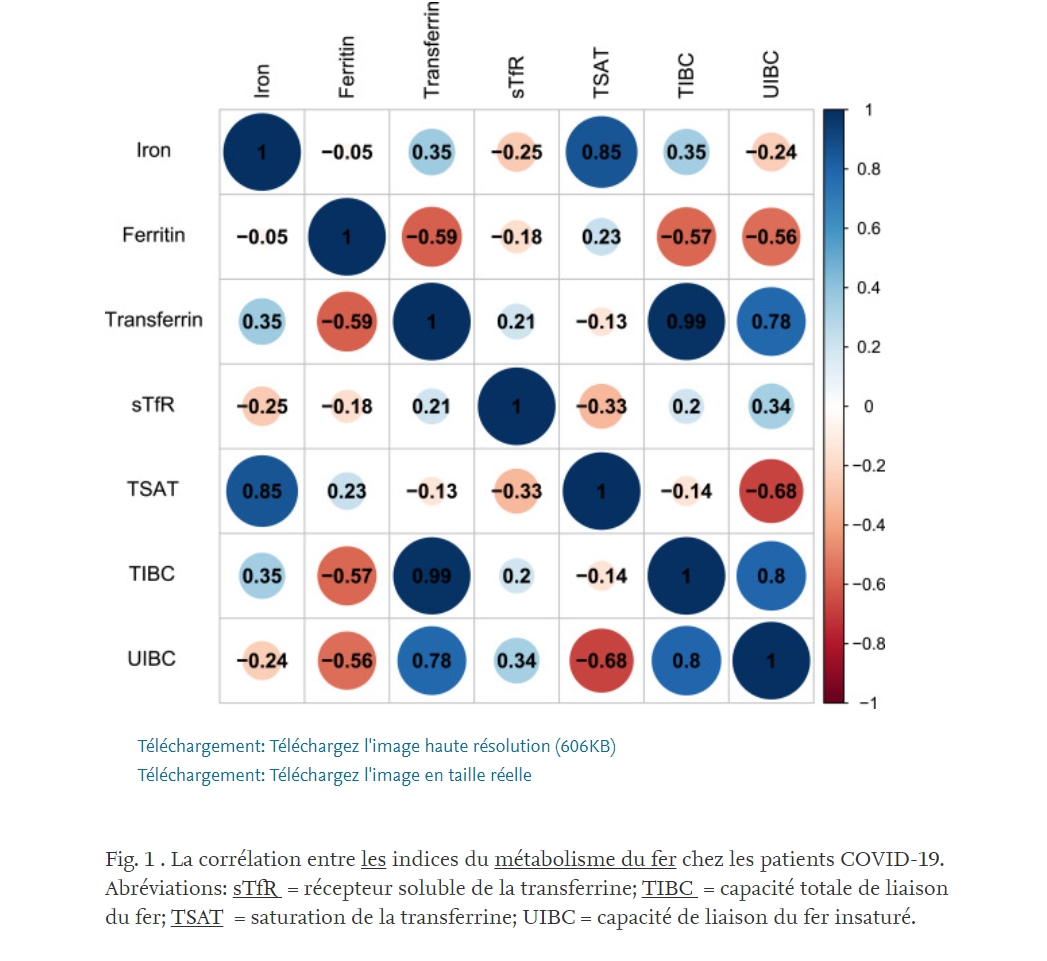Association between iron status and the risk of adverse outcomes in COVID-19
Yanling Lv Clinical Nutrition Volume 40, Issue 5, May 2021, Pages 3462-3469
Background & aims
Iron is an essential trace element to almost all organism, and the delicate balance between host defend system and viral proliferation plays an important role in infective conditions. While the association of the iron metabolism with the prognosis of COVID-19 remains poorly understood. We aimed to estimate the associations of systemic iron metabolism parameters with the severity and risks of adverse outcomes in COVID-19.
Methods
In this retrospective cohort study, we included 158 confirmed COVID-19 patients in Tongji Hospital, Wuhan, China (27 January to 5 April, 2020). Demographic data, comorbidities, laboratory examinations, treatments, and clinical outcomes were all collected. Multivariable Poisson regression was used to estimate the association of iron parameter levels with the severity and risks of adverse outcomes in COVID-19 patients.
Results
We identified 60 (38%) severe cases in 158 COVID-19 patients. The median age was 63 years (interquartile range [IQR]: 54–73) and the median length of hospital stay was 28 days (IQR: 17–40). After adjusting for age, sex, IL-6, and pre-existing comorbidities, all iron parameters were associated with the severity of COVID-19 with adjusted risk ratio of 0.42 [95% CI: 0.22–0.83], 4.38 [95% CI: 1.86–10.33], 0.19 [95% CI: 0.08–0.48], and 0.25 [95% CI: 0.10–0.58] for serum iron, ferritin, transferrin, and total iron-binding capacity, respectively. These iron indices were also related to the risk of ARDS, coagulopathy, acute cardiac injury, acute liver injury, and acute kidney injury in COVID-19 patients and high cytokine concentrations.
Conclusions
Patients with low serum iron status likely suffered from severe condition and multiple–organ injury in COVID-19. The iron metabolism parameters might be risk factors and clinical biomarkers for COVID-19 prognosis.














